Ornithology
Ornithology, in short, is the study of birds: analyzing aspects such as where to find each type, their environmental conditions, characteristics, way of life, organization, and everything that differentiate them from each other, in order to classify them into species, genera and families.

One of the characteristics studied in Ornithology is the wingspan — the maximum extent from tip to tip of the wings.
We'll see this characteristic in the game, Wingspan, where this and other factor will be decisive during the game!
Let's play Wingspan!
Wingspan - Game Info
Wingspan is a 1-to-5 players' game, age 14+, created by designer Elizabeth Hargrave. Art by Ana Maria Martinez Jaramillo, Natalia Rojas, Greg May, Beth Sobel and Elizabeth Hargrave herself.
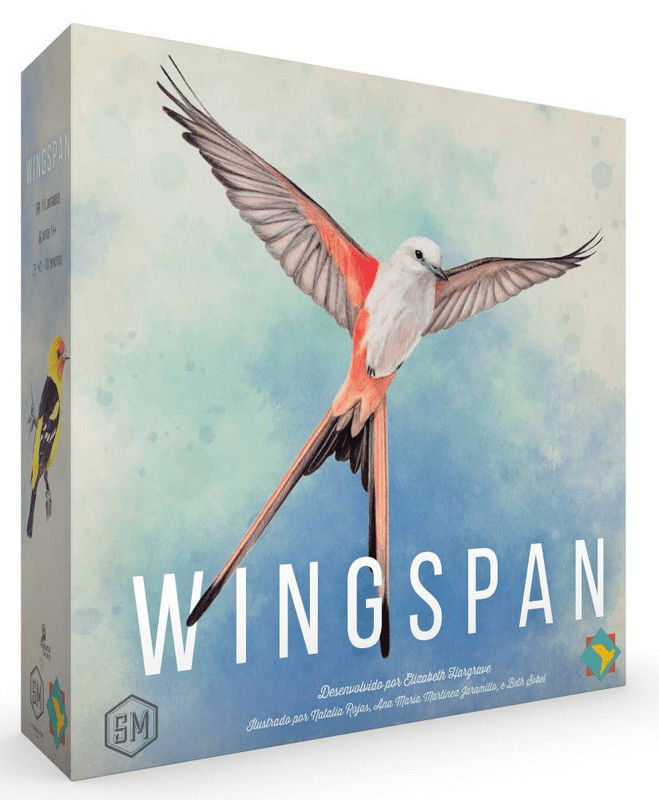
Wingspan was released in 2019 by Stonemaier Games and in Brazil in the same year by Grok Games. Its main mechanics are: dice rolling, set collection, hand management, contracts, end-game bonuses, open purchase and progressive turn order.
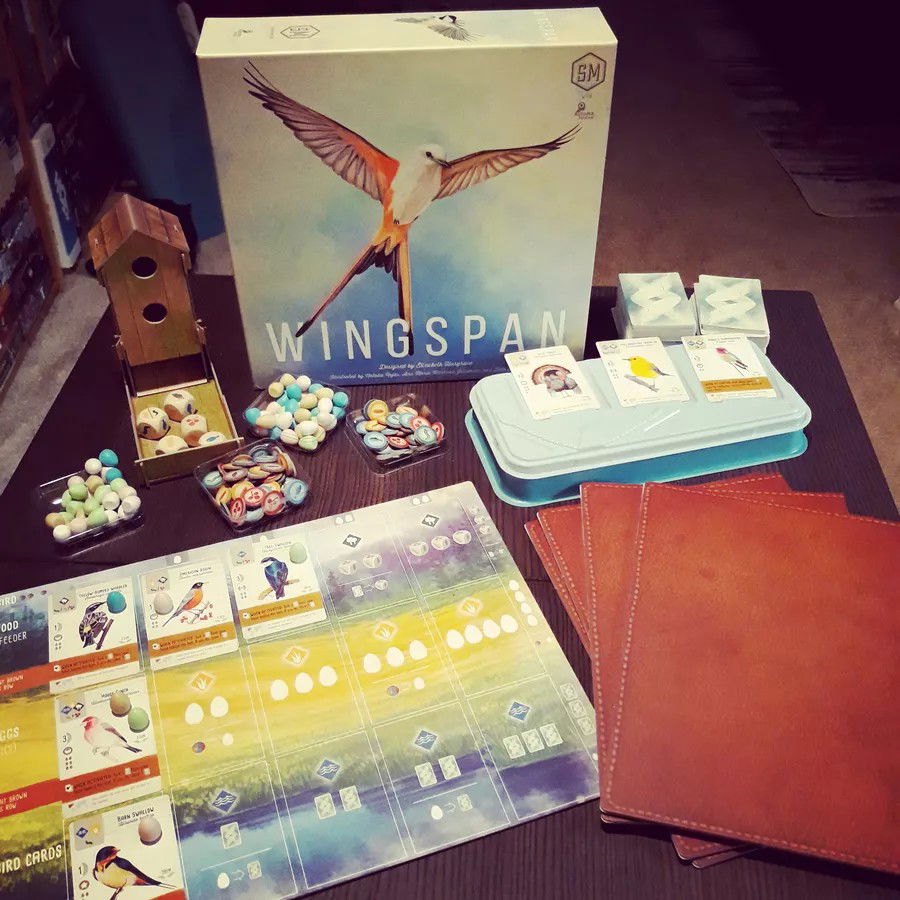
Ever since its release in 2019, Wingspan has been racking up awards, including:
- 5 Seasons: best international strategy game in 2019;
- Board Game Quest Awards: best production and game of the year in 2019;
- Deutscher Spiele Preis: best adult game and best family game in 2019;
- Golden Geek: best art and presentation, best family game, best solo game, best strategy game, game of the year and most innovative game, all in 2019;
- Gouden Ludo: best expert game in 2019;
- Kennerspiel des Jahres: game of the year by experts in 2019; - American Tabletop: best strategy game in 2020;
- JUG: adult game of the year also in 2020.
This is just the awards that it won - it's been nominated for a ton more!
Wingspan certainly is among the board games with most awards!
The Game
We are bird enthusiasts—researchers, bird watchers, ornithologists, and collectors—seeking to discover and attract the best birds to our aviary.
Each bird extends a chain of powerful combinations in one of your habitats. Each habitat focuses on a key aspect of the growth of your aviary, like gaining food, laying eggs, and expand your bird collection.
This is the scenario for Wingspan!
We will compete for more points, accumulating birds, bonus cards, end-of-round objectives, eggs, stored food and accumulated birds. This will be our race: to create a “points machine”, or engine building, to increasingly enhance our aviary with each round and generate more points.
The setup for Wingspan* follows 6 steps:
- 1) shuffle the bird cards to form the deck and place 3 cards face up on the bird tray;
- 2) place all the food and egg tokens in the supply;
- 3) roll the 5 food dice on the birdfeeder tower;
- 4) choose which goal board you want to use (they can be more competitive or less competitive);
- 5) shuffle the goal tiles and place one on each of the 4 blank spaces on the goal board;
- 6) shuffle the bonus cards to form a deck.
Finally, give each player their individual board, 8 action cubes, 2 random bonus cards (choose one and discard the other), 5 random bird cards, and 5 food tokens. Then, choose and keep only 5, between bird cards and food tokens, discarding the rest.
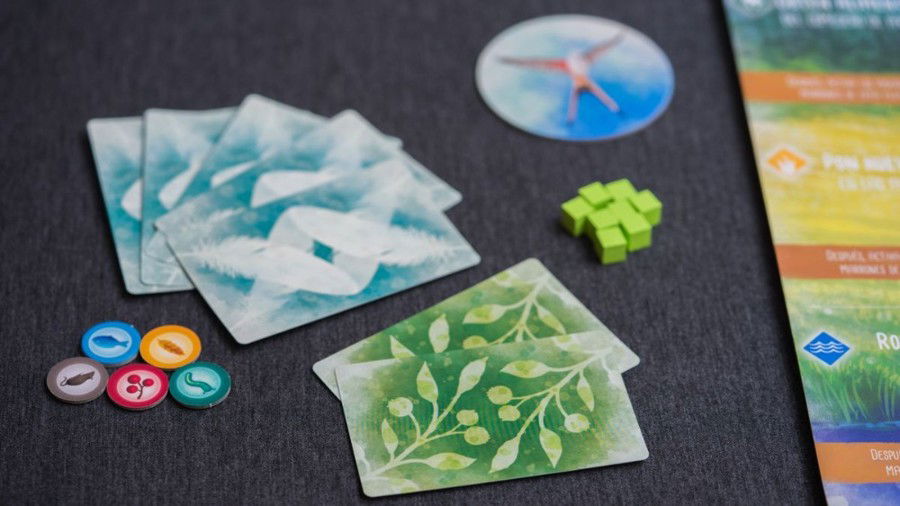
That's it! Setup is done.
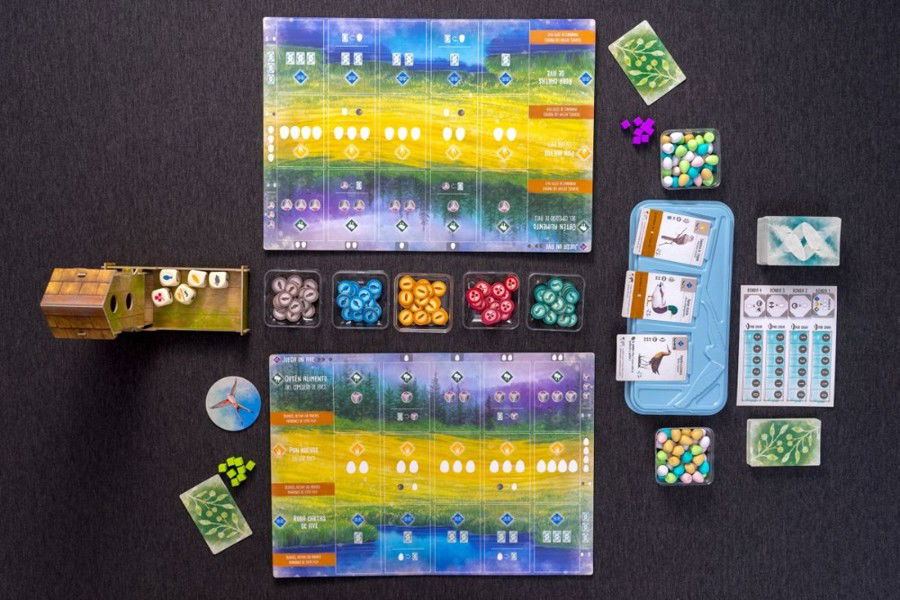
Wingspan is played over 4 rounds. In each round, players take turns until they have used all their available action cubes. On their turn, using 1 cube, the player performs one of 4 possible actions:
- Option 1: play a bird card from their hand;
- Option 2: gain food and activate forest bird powers;
- Option 3: lay eggs and activate grassland bird powers;
- Option 4: draw cards and activate wetland bird powers.
You must place the corresponding action cube to indicate which action you are performing.

In Option 1, playing a bird card from your hand, place a cube on top of the column where you intend to play the card, check its habitat, food requirements, and egg cost (if any). Each bird has at least one habitat requirement.
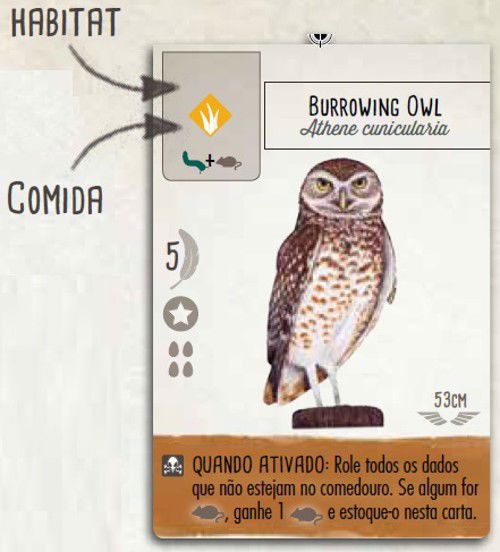
Regarding habitat types, some birds can be played in more than one habitat. The options are:
- forest;
- grassland;
- wetland.

As for food to feed birds, there are 5 different types:
- invertebrate;
- seed;
- fish;
- fruit;
- rodent.

In Option 2, gaining food and activating the forest bird powers, place a cube on the leftmost space without a bird card in the row and gain the amount of food shown on the dice you choose from the feeder.
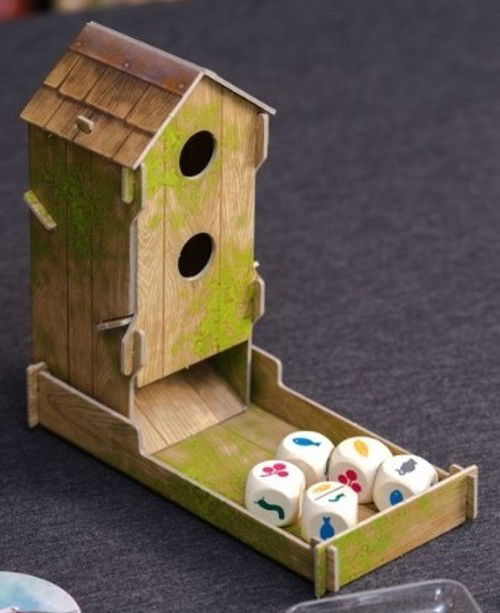
If there are cards to the left of where you placed the cube, you can activate the bird powers, from right to left. The bird powers can be divided into 3 categories:
- When activated: when the action token passes over it, from right to left, perform the effect;
- Once between turns: these powers can be activated on the opponents' turns;
- When played: activated only when the bird card is played.
Important: these powers can be activated in any of the 3 habitats, as described above.
Option 3 is lay eggs and activate grassland bird powers. Place a cube on the leftmost space without a bird card in the row and lay the corresponding number of eggs on any bird with available space.
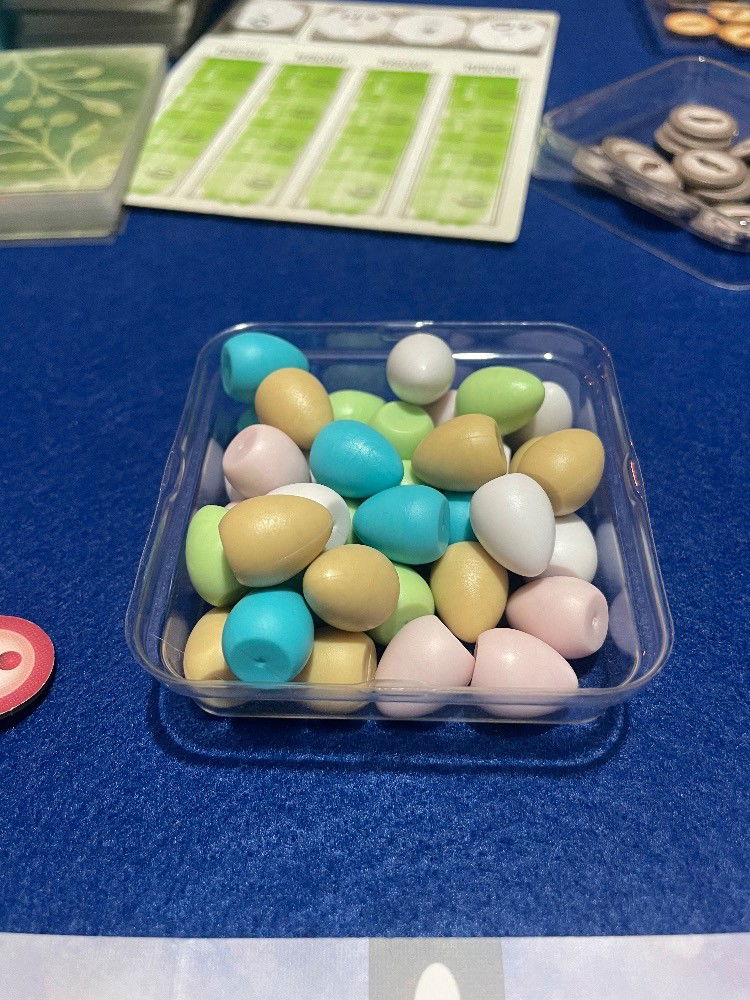
You can distribute the eggs among all your bird cards in play, which is strategic, as birds have different types of nests. This yields more points on the goal board, depending on the round.
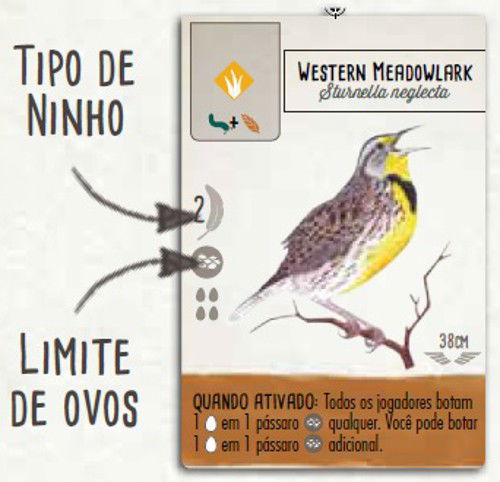
The types of nests, which are used to score points, are:
- nest on a platform;
- in the shape of a bowl;
- in a cavity;
- on the ground.
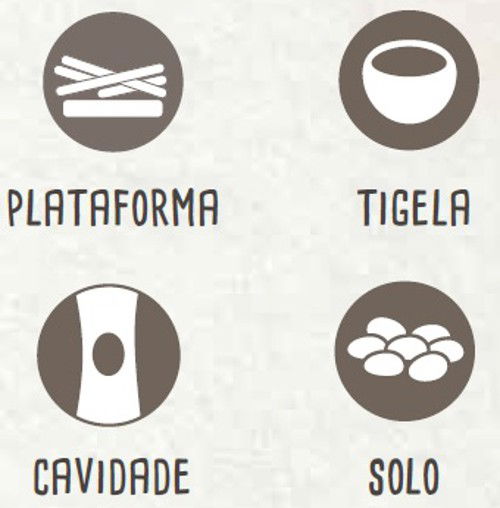
Lastly, Option 4 allows you to draw bird cards and activate wetland bird powers. Place a cube on the leftmost space without a bird card in the row and draw the indicated number of cards from the face-up cards in the bird tray or from the birds deck.
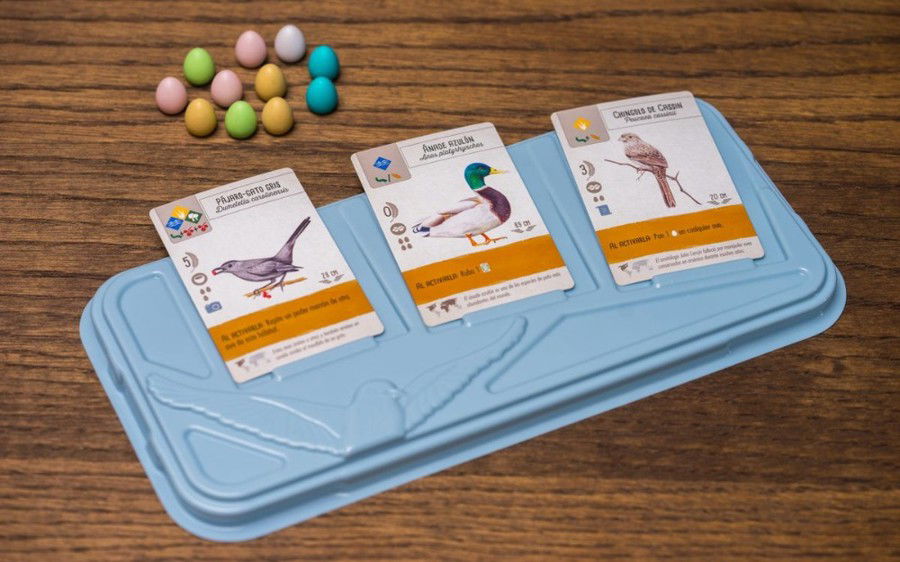
Important: there is no hand size limit!
When you draw cards from the tray, they are not immediately replaced. Instead, wait until the end of your turn to fill the empty spaces in the bird tray. If the deck runs out of cards, reshuffle the discard pile and form a new deck.
This is a Wingspan turn.
When all players have used their action cubes (1 cube per turn), the round ends. At the end of the round, make the following adjustments:
- remove all action cubes from the player board;
- score points according to the corresponding end-of-round goals;
- discard the face-up bird cards in the bird tray and replace them until there are 3 cards;
- pass the first player marker to the next player, in clockwise order.
Repeat this procedure for all 4 rounds.
Ending the Game
After 4 rounds, the game ends!
Final scoring occurs as follows:
- score points for each bird card (the amount is on each card);
- score points for each bonus card (the amount is on each card);
- score points for the end-of-round goals (as shown on the goal board);
- score 1 point for each egg on birds;
- score 1 point for each food token stored in a bird;
- score 1 point for each card stored under a bird.
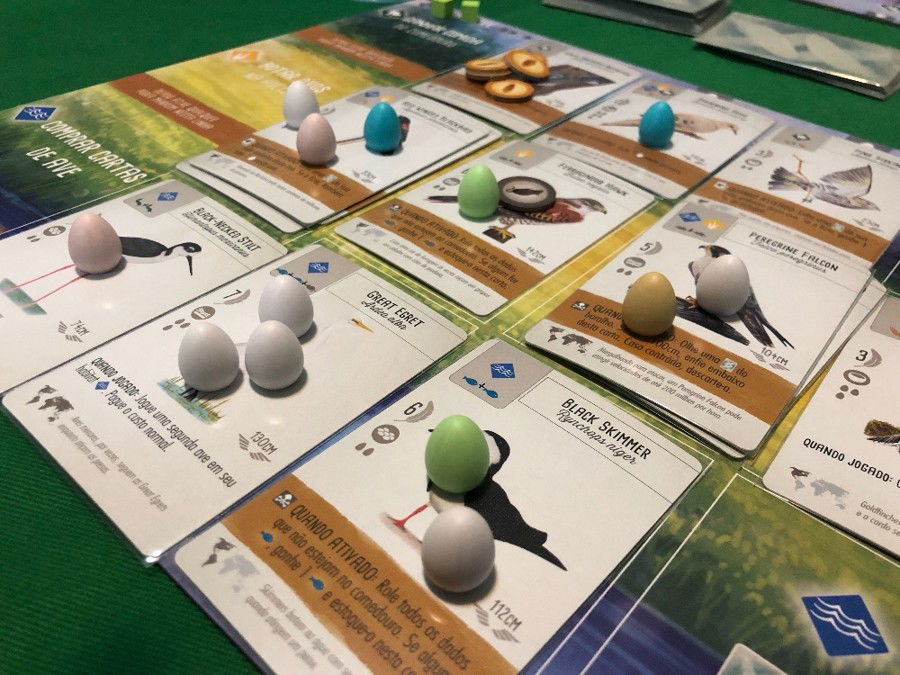
Whoever has most points is the winner! If there is a tie, the winner is the one with the most unused food tokens. If there's still a tie, then the players share the victory!
Strategy Tips
Wingspan is pure management: try to build a chain of events to increasingly enhance your actions. Here are some tips depending on the available actions:
In Option 1, when choosing bird cards, evaluate how they will help you gain new cards and food. "When activated" powers can be especially useful.
Some birds have no food requirement or accept any type of food. Remember: if a bird requires a type of food that you do not have, you can exchange any 2 food tokens for the token you need.
In Option 2, when collecting food, note that the feeder holds 5 food dice. When a player takes food, the dice is removed from the feeder, and the corresponding token is taken by the player. If the feeder tray is empty, reroll all 5 dice.
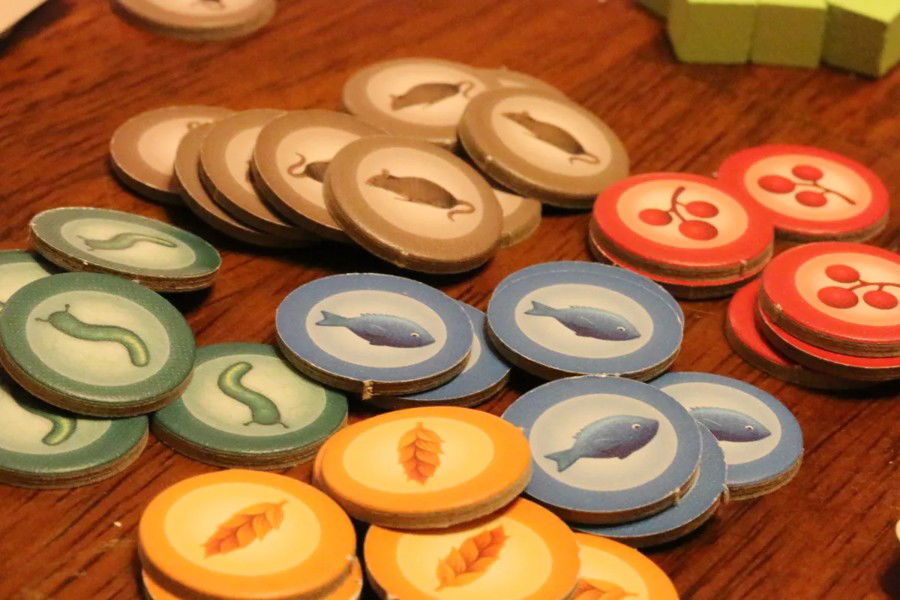
If all the dice on the tray show the same face (or if there is only 1 die) and you are going to pick up food, you can first roll all 5 dice to see more options. Be careful: it's easy to forget this rule and end up taking food you don't need.
Options 3 and 4, laying eggs and taking bird cards, respectively, are always useful. Eggs give you points at the end of the game, and bird cards give you more options — the more cards, the more possibilities.
Plan your strategy, manage all the variables and win in Wingspan!
Unboxing, Rules, and Gameplay videos
Unboxing:
Rules:
Gameplay:
Pedagogical Tips
If you're looking for a game with beautiful art, interesting themes, attractive components, lots of culture, information, and fun, Wingspan is a great choice!
The bird cards in Wingspan provide a wealth of information, such as the bird's name, scientific name, wingspan, nest type, egg capacity, habitat, feeding habits, etc. It's a real biology lesson. Take advantage of this potential with your children.
The game makes you relate the different types of birds to their appropriate habitats, which stimulates your logic and thinking at all times.
Managing a lot of things, such as food, bird cards, actions, eggs, scoring goals, etc., means the players will need to make strategic decisions about which bird to play, which food to collect, among other important choices.
Pedagogically, Wingspan offers culture, stimulates management skills, strategy, decision-making, logical-mathematical reasoning and, above all, it is fun!
I recommend Wingspan for your collection!








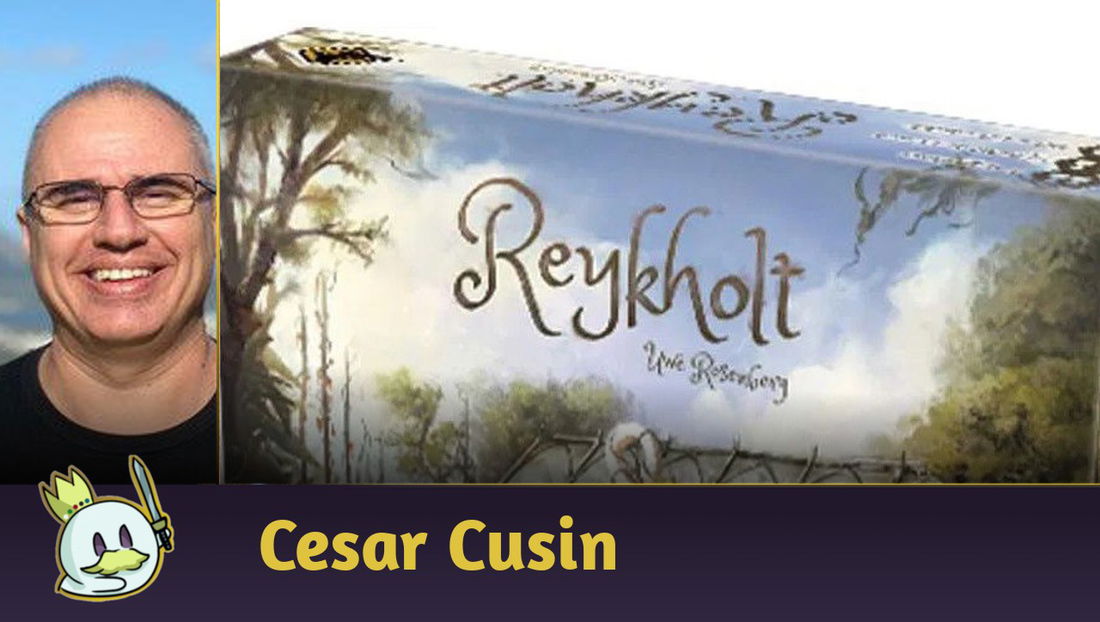



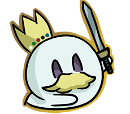
— Comentarios 0
, Reacciones 1
Se el primero en comentar